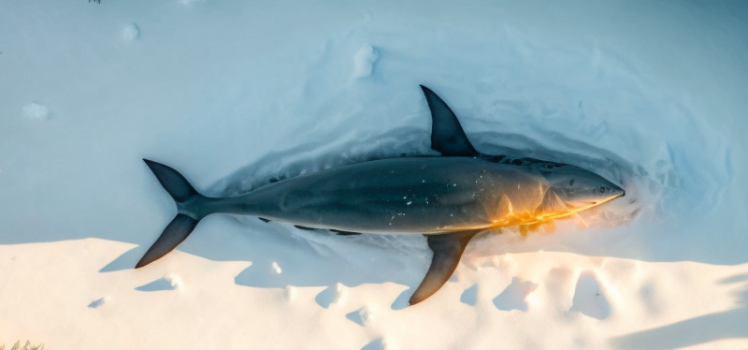An excerpt from my upcoming book about What Remains of Edith Finch

I’m currently in the final stages of editing my upcoming book about What Remains of Edith Finch! The book is called Suddenly, I was a Shark: My Time with What Remains of Edith Finch. I’ve never been so excited about a writing project before.
I’m a life-long gamer and a devoted thinker, and this book is the culmination of a life spent writing about video games both as essays & blog posts and as hundreds of visual essays, editorials, and comedy videos on YouTube. With Suddenly, I was a Shark: My Time with What Remains of Edith Finch, I feel like I’ve finally made a valid contribution to this world of video games that I love so much.
Please enjoy this sneak peek from an early chapter in the upcoming book. And please subscribe using the button below to stay informed on the book’s progress, an upcoming cover reveal, and a publication date (I’m shooting for June 2023). Paid Subscribers will receive a .epub version of the book as part of the subscription (in addition to .epub versions of ALL of my current books and essays).

“As a child, the house made me uncomfortable in a way I couldn’t put into words…” -Edith Finch
Edith stands on the estate side of a padlocked gate. The fence’s top rail behind her has bent to the weight of her body where she had heaved herself over. Surmounting this shaky fence could not have been easy.
I face down a winding asphalt path toward the home that Edith and her mother escaped from seven years ago. The asphalt is buckled and broken; the world below has refused to settle during those empty years. Tree roots have rippled the ground. Ivy reclaims the wooden barrier lining the path like it’s trying to rip down this safety measure, to make any intruder’s journey a dangerous one. But Edith would not have returned if danger worried her.
Edith is the lone surviving member of the Finch family, following 11 deaths beginning with her great-great grandfather, Odin. She’s returned here to her childhood home, following her own mother’s recent passing, to learn the truth of these strange deaths, to learn if what her great grandmother Edie claimed is true: the Finch family is cursed.
This asphalt path she’s on leads to many things. For the Giant Sparrow development team, this path at the start of their game What Remains of Edith Finch leads to a 2018 BAFTA Award for Best Game, a NAVGTR Award for Best Original Adventure Game, a SXSW Gaming Awards award for Excellence in Narrative, a 2017 The Game Awards award for Best narrative, and a slew of nominations. For gamers it leads to either the epitome of an underappreciated gaming genre or it leads to further evidence of an over-appreciated one. For me—an author of several books of fiction—it changes my entire understanding of the power of story. And it will change you, too, as it has so many players. Saturday Night Live alumnus and host of The Tonight Show with Jimmy Fallon, says of the game, “it’s one of my favorite things… it’s gonna change your life.”
But for 17 year-old Edith Finch the path leads to her childhood home tucked away within the sublime forests along the coasts of America’s Pacific Northwest. This is a world of vagabonds and misfits. This is a world of hope and death. This is a world where trees and cliffs meet, each offering opposing options for escape. A tree points optimistically upward into open sky while a cliff offers escape downward into the sea. The Finch home itself, then, is a limbo trapped between exits.
There are no shops out here. No schools. No neighbors. Only one restaurant, a Chinese takeout, delivers this far outside proper civilization. But the woods, though they are forever patient, are unquestionably alive. “The woods around the house have always been uncomfortably silent,” Edith says as I walk the path from the padlocked gate to Edith’s empty childhood home. “As though they are about to say something but never do.”
Breathtaking, you could call it; Edith’s world is one that threatens to take your breath just as it has taken the breath of Edith’s family.
What Remains of Edith Finch is set in a house framed by trees that are themselves framed by the Pacific Northwest’s cruel geography. This region’s reputation for awe is in full force here, guiding me forward despite persistent unease.
Creative Director, Ian Dallas, wanted What Remains of Edith Finch to give the player a feeling of the sublime, of being stricken by beauty and simultaneously fearful of it. The game’s setting certainly primes the story for the sublime. Its geography and citizenry clash and compliment to create a uniquely alluring world. Portland, Oregon author Katherine Dunn once identified the Pacific Northwest as a place of misfits, reasoning that those who want to escape their hometowns for a better life travel west then migrate north for its cheap cost of living. Speaking to Chuck Palahniuk, a fellow Portland author, she said “we just accumulate more and more strange people. All we are are the fugitives and refugees.”
Parts of the Pacific Northwest still today maintain a reputation for a vagabond culture that proudly rejects homogeneity while proclaiming acceptance.[1]I want to be careful not to conflate all of the Pacific Northwest with just Portland, Oregon, as the city is uniquely weird (rivaled in notoriety perhaps only by Seattle, Washington, just 170 miles … Continue reading This is a land where mainstream narratives are met with suspicion. Pacific Northwest native Kurt Cobain, of the band Nirvana which popularized Seattle grunge music for the world in the early 1990s, famously rejected the rockstar flamboyance narrative of preceding generations. “There is nothing in the world I like more than pure underground music,” Cobain told Sassy in April of 1992. “Pure” and “underground” are anathema to the then-popular adornments of mainstream success: big hair, pyrotechnic stage shows, and machismo. That same year Nirvana’s song “Smells Like Teen Spirit” won an MTV Video Music Award, one of the highest honors given by the once dominant television channel and arbiter of popular music. The song title etched into the award placard misspells “Teen” as “Team.” This error surely didn’t change Cobain’s opinion of the mainstream.
As an angsty teenager I loved what Nirvana embodied despite Cobain dying and the group having disbanded before I reached those teenage years. I felt trapped in my small town in Kansas, and I looked to the Pacific Northwest as a land of compatible souls. But even when I graduated high school and applied to universities, I never considered an actual move to the West. I felt comfortable keeping that world at arm’s length. I was shaped by the lyrics of a dead man, but I was unwilling to tempt the world that had shaped him. In that way, Edith is much braver than I am. The world she’s returning to is armed and eager to shape her, and she’s ready for it.
From the padlocked gate, I look toward the path’s end. At the top of this hill in the center of the forest, cropped at the center of the player’s screen, a cathedral-like spire juts from the horizon. It’s rejected by the surrounding world. An expunged poison. Pus from a popped zit. This is my destination. This misshapen, confusing, and obviously unsafe structure—obvious even from this distance of several hundred feet—was Edith’s home just seven years ago.
From this distance the construction could be the product of a weary believer driven by an impatient god to hastily construct an idol. Or it could equally be the purposeful work of a craftsman inspired by the fantastical logic of a Rube Goldberg machine. After numerous playthroughs, I’m still not sure which is more accurate.
One thing is for sure: the impossible house is intoxicating. So, I do the only thing the game allows me to do at this point. I walk toward the house. Slowly. The world slumbers as I shift along the path before me. Slowing down, as it turns out, is a great way to change me, to turn the world itself into an epiphany.
Footnotes
| ↑1 | I want to be careful not to conflate all of the Pacific Northwest with just Portland, Oregon, as the city is uniquely weird (rivaled in notoriety perhaps only by Seattle, Washington, just 170 miles north, which is itself 100 miles of coastal and ferryboat travel south of Orcas Island, the proper setting of the game), but this focus is necessary in order to understand the Finches. Their home is a lone beacon of mystery secluded amid dense forests and bays in the very Northwest corner of the Northwest region. The home is a soup cracker of strange within a bowl of weird amidst a full table of adequately normal. |
|---|

